|
|
 Estrogen dominance is becoming one of the more common hormone imbalances among both men and women.
Estrogen dominance is becoming one of the more common hormone imbalances among both men and women.
Estrogen dominance occurs when the ratio of estrogen to progesterone sways too much one way or the other. One of the most common patterns with estrogen dominance is to see excess estrogen in relation to progesterone, which is often too low.
All hormones are chemical messengers that act much like a switchboard operator, directing the body to do one thing or another. Hormone balance is essential to nearly all functions in the body, including growth and development, sex and reproduction, mood, sleep, and how the body uses food (or stores it as fat), just to name a few. When your hormones are in balance, you feel great, look great, have sustainable energy, a healthy appetite and a healthy sex drive.
When hormones become out of balance, however, we often experience a wide variety of symptoms that can affect mood and energy, and may also lead to more serious conditions like the development of uterine fibroid tumors, fibrocystic breasts or hormone positive cancers, among others. For a more in depth overview of how hormones change throughout our life cycle, please read the Hormonal Balance page.
Estrogen and progesterone are two of the primary sex hormones involved in the many everyday biological functions that occur in our bodies. Estrogen dominance occurs when the ratio of estrogen to progesterone sways too much one way or another. One of the most common patterns with estrogen dominance is to see excess estrogen in relation to progesterone, which is often too low.
Estrogen and progesterone work in synchronization with each other like a system of checks and balances to achieve hormonal harmony in both men and women. Estrogen is an active hormone that is actually able to increase the production of its own receptors. It stimulates tissue to grow. When left unchecked (due to inadequate progesterone levels), it can stimulate tissue to grow inappropriately. Progesterone works to balance estrogen. It is able to decrease the production of estrogen receptors, thus protecting the body from estrogen induced tissue growth like uterine fibroids and estrogen positive cancers. Estrogen and progesterone need the presence of each other in order to correctly perform their individual functions. When estrogen and progesterone become out of balance, often estrogen dominance is the result.
The primary role of estrogen in women is to maintain the growth and function of the uterus so that the sex organs can become adult sized, and also to prepare the uterine lining to receive a fertilized egg. Additionally, for both men and women, estrogen affects skeletal growth, skin, fat and protein deposition, and electrolyte balance. Maintaining a healthy balance of estrogen can be difficult, as there are many factors today that can increase estrogen and create imbalance, including exposure to xenoestrogens, phytoestrogens and poor estrogen metabolism.
There are three forms of estrogen: estradiol, estrone and estriol. Estradiol is by far the most potent form. It is 12 times more potent than estrone and 80 times more potent than estriol. Over exposure to estradiol may increase a person's risk of estrogen related symptoms and/or disease. This can happen when excess exposure to estradiol creates an unnatural ratio of estradiol and estriol. Estriol, on the other hand, is considered the "good estrogen" as studies show it may actually be cancer protective.
When in the proper balance and in a natural form, those requiring more estrogen, such with menopause, may find that natural estrogen cream helps.
Progesterone is the building block for many other major hormones including corticosteroids, which are essential for stress response, electrolyte balance, blood pressure, and survival. Cortisol, DHEA, testosterone and estrogen are all made from progesterone in a process that begins with cholesterol. Progesterone is a primary hormone needed for fertility and pregnancy. It is essential to the survival of the fertilized egg, the embryo, and the fetus. In pregnancy, it prevents the shedding of the uterine lining. A drop in progesterone can result in a miscarriage.
There is only one type of progesterone, as opposed to the three types of estrogen. When in its all natural form progesterone is considered a very safe hormone. When in a synthetic form, progesterone is called progestin, and is considered to have much greater health risks than all natural progesterone.
Adequate progesterone levels are essential to healthy hormone balance.
The following symptoms are common among those with estrogen dominance. What begins with mild symptoms in younger years often becomes moderate in the mid to late 30s, and severe by the time a person reaches their mid-40s. If you are experiencing as few as 6 of these symptoms, it's likely you are experiencing some level of estrogen dominance.
| MILD | MODERATE | SEVERE |
| Premenstrual breast tenderness | Irregular menstruation | Uterine fibroid tumors |
| Premenstrual mood swings | Weight gain | Endometriosis |
| Premenstrual fluid retention, weight gain | Hair loss | Fibrocystic breasts |
| Premenstrual headaches | Depression | Polycystic ovary syndrome |
| Menstrual cramps | Fatigue | Breast tumors |
| Thyroid dysfunction | Infertility | |
| Adrenal gland fatigue | Thickened uterine lining | |
| Headaches, migraines | Accelerated aging | |
| Severe menstrual cramps | Miscarriage | |
| Heavy periods with clotting | Anxiety and panic attacks | |
| Joint and muscle pain | Autoimmune disorders | |
| Decreased libido | Impotency | |
| Insomnia and restless sleep | Estrogen related cancer | |
| Dry eyes | ||
| Lowered libido | ||
| Prostate problems |
Estrogen dominance is generally not caused by one factor, but often many factors, including:
For women, from the time menses begins until menopause, levels of estrogen and progesterone ebb and flow in a manner which promotes reproduction. Sometime around age 35 to 40, most women begin to approach the time of premenopause, or perimenopause, which is when their levels of progesterone and estrogen begin to decline.
Normal Hormone Progression
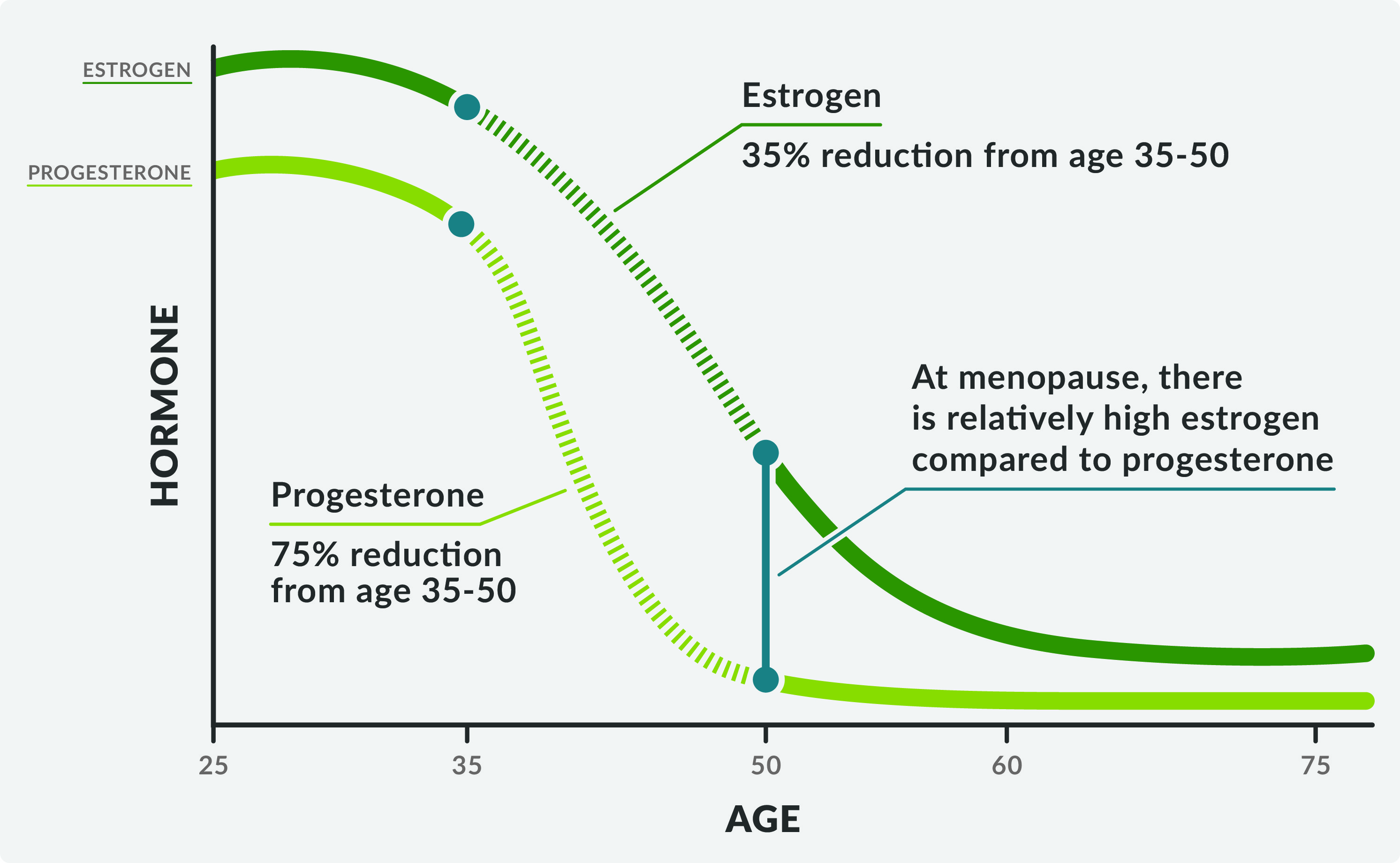
Between the time perimenopause starts through about age 50, there is an approximate 35% drop in estrogen, but a 75% reduction in progesterone occurring simultaneously. This is considered normal, however because estrogen and progesterone are so dependent on each other, the dramatic decrease in progesterone production leaves many women with symptoms of estrogen dominance, even if estrogen levels are lower than before. It is also possible for women to experience high levels of estrogen along with normal or low levels of progesterone, which would also be considered estrogen dominant. This is the more common scenario for women during menstruation years.
Many premenopausal women in their mid to late thirties, as well as many women in the menopausal stage are overloaded with estrogen. At the same time they are suffering from progesterone deficiency because of the severe drop in physiological production during this period. There is then insufficient progesterone to balance the amount of estrogen in our body. It is most noticeable among perimenopausal women who do not ovulate, which is quite common. It is possible to have a fairly normal cycle, but no egg is released and very little progesterone is produced.
Balance is key when addressing hormone related health issues. It is not the absolute overabundance or deficiency of estrogen or progesterone that is the problem, but rather the relative amount of estrogen and progesterone when compared to each other. The bottom line comes down to this: if progesterone is out of balance relative to estrogen, then, as coined by Dr. John Lee, estrogen dominance is likely at work. Dr. Lee's book, Hormone Balance Made Simple, explains this more in-depth. This book is available on our website.
Until recently, doctors routinely prescribed hormone replacement therapy (HRT) for menopausal symptoms or for women who have experienced surgical menopause (due to removal of the ovaries). These prescription drugs are comprised of synthetic estrogen or an estrogen-progestin combination. HRT is also used to protect against the loss of bone after menopause.
There are many risks associated with HRT, as many studies over the years have concluded. Concerns about synthetic hormone therapy arose from the Women's Health Initiative (WHI) clinical trial, whose purpose was to address the most common causes of death, disability and impaired quality of life in postmenopausal women. The hormone replacement therapy (HRT) component of the WHI trial looked at the long-term use of oral HRT in older women in the USA for the prevention of disease. The WHI study was stopped in 2002 because the incidence of invasive breast cancer exceeded the safety level set by the WHI. Many doctors are no longer prescribing synthetic HRT.
For women taking the combination of estrogen-progestin (Prempro) used in the study, researchers found an increased risk of:
Women and their doctors are discovering that conventional HRT does not give them the overall health and well-being they had hoped for, and many are seeking out healthier alternatives, such as natural bio-identical hormone replacement, lifestyle changes, and diet changes. What is key here, and what many practitioners are beginning to realize, is that menopausal symptoms and sexual reproductive problems are actually symptoms of overall hormonal imbalances, including estrogen dominance.
To thoroughly address hormonal issues, women and practitioners must carefully and fully consider the delicate balance that each sex hormone plays wellness. In addition, not only did hormone therapy increase the women's risk of breast cancer, it also made tumors harder to detect, leading to potentially dangerous delays in diagnosis.
Birth control pills contain estrogen, and contribute to the development or worsening of estrogen dominance. Depending on dosage, birth control pills can be very potent, and may linger for a long period of time in the body. Dr. Joseph Mercola's article, Just Say No to Birth Control Pills, states the following about birth control pills:
"A woman's natural cycle is composed of rising and falling levels of estrogen and progesterone. Birth control pills work by keeping estrogen at a sufficiently high level that they fool the body into thinking it is pregnant, therefore another pregnancy cannot occur.
Cramping, painful and irregular periods are often due to a deficiency of progesterone and an excess of estrogen. Estrogen-alone birth control pills—the most commonly prescribed pills on the market now—often compound the problem. That's why some women have intolerable estrogen-induced side effects when they are on birth control pills such as weight gain, mood swings, and breast tenderness.
What is not usually mentioned, or even known, is the metabolism of birth control pills by the liver requires extra amounts of the B-complex vitamins, Vitamin C, magnesium, and zinc. That means if you're taking birth control pills for years at a time, as are most American women, you're creating nutrient deficiencies. Weight gain, fluid retention, mood changes, depression and even heart disease can all arise from nutrient imbalance."
Unbeknownst to many of us, we are constantly being exposed to estrogens in our environment from the food we eat and the chemicals we use. Xenoestrogens in the form of chemicals and food additives, along with strong plant estrogens (phytoestrogens), actually mimic the action of estrogen produced in cells and can alter hormonal activity.
Evidence is steadily growing that xenoestrogens and other hormone mimicking substances are implicated in a wide range of human and wildlife health problems. Estrogen dominance from these environmental hormone disrupters are causing an imbalance of hormones, and creating a host of estrogen dominance symptoms. Xenoestrogens are a major contributing factor to the recent incidence of early onset puberty in American teens, and likely plays a part on increased symptoms of PMS many women are experiencing today. Xenoestrogens produce a hormonal stimulus that contributes to inappropriate growth of mammary tissue cells, resulting in a problem many men are starting to experience, called Gynecomastia, or, male breast enlargement. Estrogen dominance in men may also be contributing to hair loss, atherosclerosis, prostrate problems, lowered libido, and impotency.
Xeno means foreign; therefore xenoestrogens literally means foreign estrogens. Xenoestrogens can be found in many sources. In fact, some of the 70,000 registered chemicals for use in the United States have hormonal effects in addition to toxic effects. The effects of xenoestrogens are beginning to be researched and understood as contributing factors to a variety of health challenges, including estrogen dominance and obesity. Read more about xenoestrogens and obesity in our blog The Skinny on Fat - and the Role Hormones and Obesogens Play.
Xenoestrogens found in certain pesticides, plastics, fuels and drugs are usually synthetic and difficult for the body to break down, and can mimic the effects of estrogen in the body. These substances can increase the estrogen load in the body over time, and are difficult to detoxify through the liver. Exposure to xenoestrogens is a concern for everyone. Those with an estrogen dominance condition should take particular care to avoid xenoestrogens.
|
|
For a more extensive list of xenoestrogens, see our Environmental Estrogens page.
Phytoestrogens (phyto meaning plant) are naturally occurring estrogenic compounds that are found in a variety of foods, herbs and spices. Their chemical structure resembles biological estrogen and can act similarly in the body. These compounds vary in strength, ranging from weak to strong. Stronger phytoestrogens include soy, the lignans found in flaxseed products, red clover, black cohosh, and dong quai. Soy includes soybeans, soy milk, tofu, tempeh, textured vegetable protein, roasted soybeans, soy granules, soy protein powders, miso, and edamames.
Overconsumption of phytoestrogenic foods or herbs on a long term basis may actually increase the risk of estrogen dominance significantly. Furthermore, phytoestrogens have been shown to inhibit the conversion of T4 to the active T3 thyroid hormone, and can trigger hypothyroidism. It is suggested that those with a history of thyroid imbalance, or suffering from estrogen dominance, should consume a minimum amount of phytoestrogens.
Prolonged stress can cause adrenal gland fatigue and reduced progesterone output. This tilts the estrogen to progesterone ratios in favor of estrogen. Excessive estrogen in turn causes insomnia and anxiety, which further taxes the adrenal glands. This leads to a further reduction in progesterone output and even more estrogen dominance. After a few years in this type of vicious cycle, the adrenal glands become exhausted. This dysfunction leads to blood sugar imbalance, hormonal imbalances, and chronic fatigue.
A large part of hormonal balance is controlled by the three major glands: the adrenal glands, the thyroid gland, and the ovaries (in women), and testes (in men). Maintaining a proper balance among these three glands is of critical importance in any estrogen dominance recovery program. Excessive estrogen affects both thyroid and adrenal function, and in turn, dysfunctional thyroid and adrenal fatigue makes estrogen dominance worse. It is a delicate balance which, when thrown off kilter, can have longstanding consequences. Many conventional medical practitioners will often treat the symptoms of estrogen dominance without addressing the root cause. A wide variety of prescriptions from sleeping pills to anti-depressants are commonly dispensed. Unfortunately, such symptom-based protocols will often make things worse, not better. Instead, practitioners need to address the root cause of the problem, which includes addressing the functioning major glands in the body.
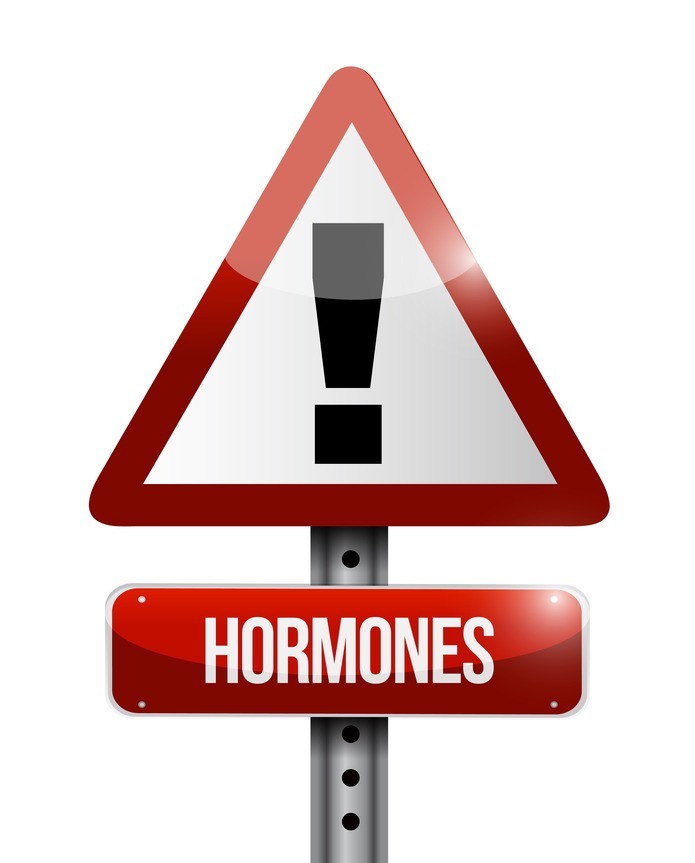 Estrogen dominance can lead to many different related health conditions. For example, in women, over-stimulation from estrogen of the breast tissue can cause tenderness, swelling, and fibrocystic breasts. In the uterus, excess estrogen stimulation may lead to endometriosis, hyperplasia, heavy or irregular menses, menstrual cramping and uterine fibroid tumors. If estrogen overstimulation occurs in the liver, we see weight gain, constipation, cyclical headaches and migraines, depression, mood swings, fluid retention, and low libido among many other symptoms.
Estrogen dominance can lead to many different related health conditions. For example, in women, over-stimulation from estrogen of the breast tissue can cause tenderness, swelling, and fibrocystic breasts. In the uterus, excess estrogen stimulation may lead to endometriosis, hyperplasia, heavy or irregular menses, menstrual cramping and uterine fibroid tumors. If estrogen overstimulation occurs in the liver, we see weight gain, constipation, cyclical headaches and migraines, depression, mood swings, fluid retention, and low libido among many other symptoms.
Furthermore, estrogen dominance may:
Source: Leslie Kenton, Passage to Power, Random House, UK, 1995
Estrogen dominance is becoming an all too common condition today; one that if left unaddressed can bring about serious health challenges. Bringing your hormones into balance is the key to feeling great, looking great, and living well. Remember to keep the following things in mind when working to balance estrogen dominance:
How do you go about correcting estrogen dominance and rebalancing hormones? Many healthcare providers make the following suggestions:
Supplementation with estrogen metabolizers can help promote proper estrogen levels throughout a person's life cycle, and may be particularly helpful during the pre- and peri-menopausal years. Men experiencing higher estrogen levels will also benefit from using estrogen metabolizers. Estrogen metabolizers can be helpful for various estrogen dominant related conditions including uterine fibroid tumors, fibrocystic breasts, glandular dysfunction, stubborn weight gain, hair loss, prostrate problems, atherosclerosis, lowered libido, and impotency, among others.
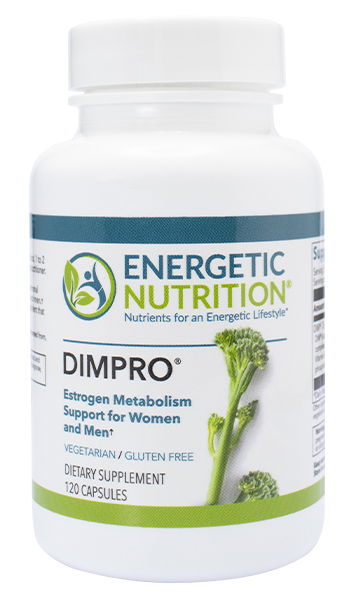 DIM is a naturally occurring phytonutrient found in cruciferous vegetables. DIM promotes beneficial estrogen metabolism and healthy hormonal balance 1,2,3 and optimizes the ratio of estrogen metabolites that is crucial for breast 3, uterine4, cervical5, and prostate6 health. It can be helpful for various estrogen dominant related conditions. Along with promoting healthy estrogen metabolism, DIM works as an aromatase inhibitor, thus promoting a more desirable action from testosterone. This can help boost mood and sustain an interest in sex for both men and women.
DIM is a naturally occurring phytonutrient found in cruciferous vegetables. DIM promotes beneficial estrogen metabolism and healthy hormonal balance 1,2,3 and optimizes the ratio of estrogen metabolites that is crucial for breast 3, uterine4, cervical5, and prostate6 health. It can be helpful for various estrogen dominant related conditions. Along with promoting healthy estrogen metabolism, DIM works as an aromatase inhibitor, thus promoting a more desirable action from testosterone. This can help boost mood and sustain an interest in sex for both men and women.
Often when a person is estrogen dominance progesterone levels are low. Supplementing with a bio-identical progesterone product helps to balance the ratio between estrogen and progesterone, thereby assisting in promoting proper hormone balance. Progesterone can be safely used by menstruating women, pre- and perimenopausal women, and menopausal women. Men with estrogen dominance can also benefit from progesterone. Additionally, women who may not be highly estrogen dominant but struggle with severe PMS often find that if a progesterone cream is used on a regular basis, their menses and PMS are less difficult.
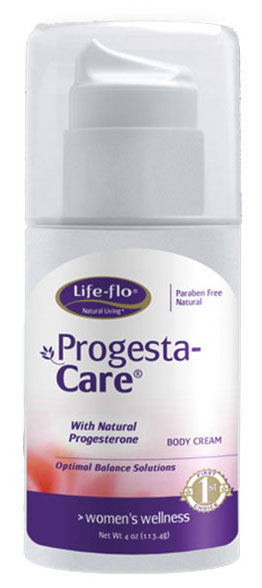 Progesta-Care bio-identical progesterone products from Life-Flo provide natural progesterone supplementation that are free of synthetics and parabens, and will naturally supplement low progesterone levels, thus helping to balance the ratio between estrogen and progesterone. Progesta-Care products provide measured doses, making supplementation easy and safe.
Progesta-Care bio-identical progesterone products from Life-Flo provide natural progesterone supplementation that are free of synthetics and parabens, and will naturally supplement low progesterone levels, thus helping to balance the ratio between estrogen and progesterone. Progesta-Care products provide measured doses, making supplementation easy and safe.
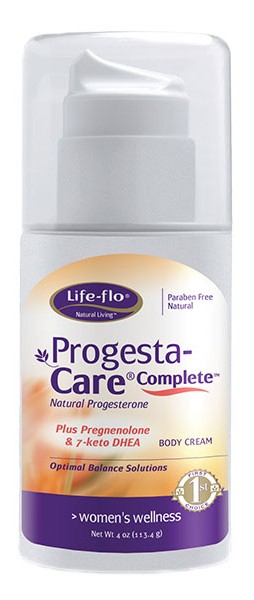 Progesta-Care Complete includes Prognenolone and 7-Keto DHEA and can be used by those who are estrogen dominant and/or suffering from fibroid tumors and other women's fibrosis conditions.
Progesta-Care Complete includes Prognenolone and 7-Keto DHEA and can be used by those who are estrogen dominant and/or suffering from fibroid tumors and other women's fibrosis conditions.
Ensuring that your body is able to adequately detoxify itself of used hormones is a crucial part of re-establishing healthy hormone balance. When hormones are not adequately detoxified, they may recirculate in the body, further contributing to estrogen dominance.
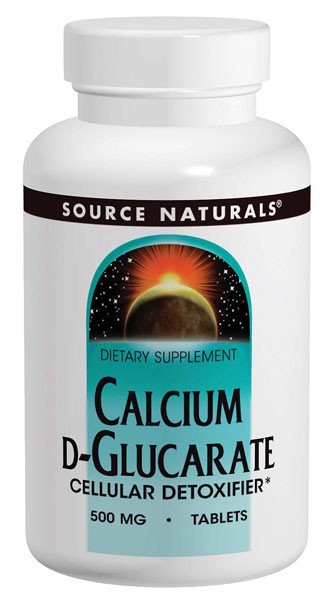 Calcium D-Glucarate is a botanical extract found in fruits and vegetables that can be beneficial in helping to remove toxins and excess used hormones, preventing them from being reabsorbed into the bloodstream and deposited in the tissues of your body. Calcium D-Glucarate helps to support liver function and detoxification.
Calcium D-Glucarate is a botanical extract found in fruits and vegetables that can be beneficial in helping to remove toxins and excess used hormones, preventing them from being reabsorbed into the bloodstream and deposited in the tissues of your body. Calcium D-Glucarate helps to support liver function and detoxification.
The PuraCell Systemic Detoxification and Cleansing is a powerful blend of minerals, herbs, enzymes, and cracked wall (broken cell wall) chlorella that can be used as a "Gentle Daily Cleansing," regimen or a "Quick 30-Day Flush." Few other products, if any, can deliver such thorough coverage on such a vast array of toxicity concerns, especially in such a gentle manner.
Nutritional supplements are essential to ensure your body has the nutrients it needs to make and balance hormones appropriately. Many of these nutrients tend to be low when estrogen is high:
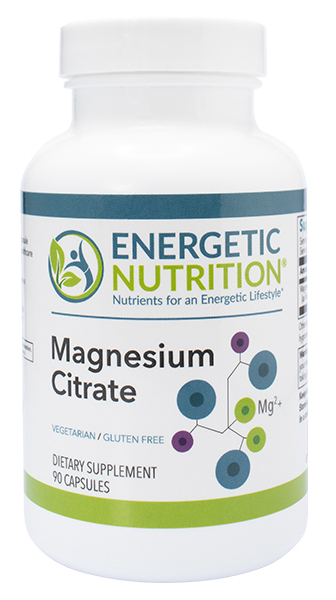 Magnesium Citrate provides the body with a highly absorbable form of magnesium, which is often depleted when estrogen levels are high. A deficiency in magnesium can lead to severe PMS, muscle cramping, and fatigue, among other symptoms. Magnesium is important for hundreds of bodily processes and can have an effect on virtually every organ system within the body. Therefore, it is important to be sure that your body gets adequate daily amounts.
Magnesium Citrate provides the body with a highly absorbable form of magnesium, which is often depleted when estrogen levels are high. A deficiency in magnesium can lead to severe PMS, muscle cramping, and fatigue, among other symptoms. Magnesium is important for hundreds of bodily processes and can have an effect on virtually every organ system within the body. Therefore, it is important to be sure that your body gets adequate daily amounts.
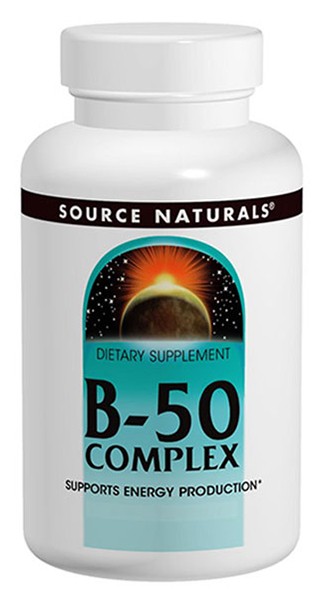 B Vitamins play an important role in maintaining health by transporting oxygen into our cells. B vitamins support healthy nerve function, energy production, and hormone balance. B-vitamins act as coenzymes, helping enzymes to react chemically with other substances, and are involved in energy production. Each B-vitamin fills a different complementary need, which is why they should most often be taken together. B-50 provides all of the essential B-Vitamins necessary for healthy hormone balance.
B Vitamins play an important role in maintaining health by transporting oxygen into our cells. B vitamins support healthy nerve function, energy production, and hormone balance. B-vitamins act as coenzymes, helping enzymes to react chemically with other substances, and are involved in energy production. Each B-vitamin fills a different complementary need, which is why they should most often be taken together. B-50 provides all of the essential B-Vitamins necessary for healthy hormone balance.
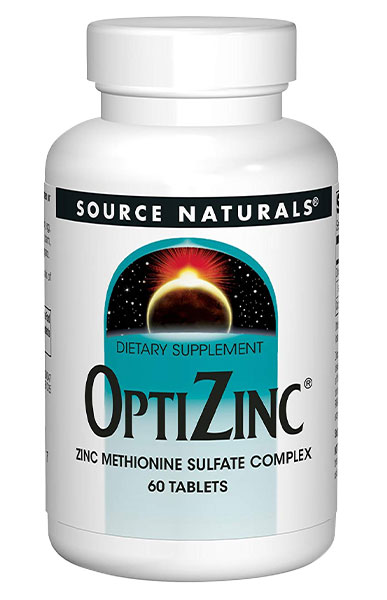 Zinc plays an important role in hormone production and balance. Zinc helps to increase progesterone levels and lower estrogen. Excess estrogen can lower serum zinc levels in people who are estrogen dominant. More than 70% of women do not obtain the minimum daily requirement of zinc from their diets. Zinc also has a critical role in male sexual function and is necessary for all aspects of male reproduction, including hormone metabolism and sperm formation and motility.
Zinc plays an important role in hormone production and balance. Zinc helps to increase progesterone levels and lower estrogen. Excess estrogen can lower serum zinc levels in people who are estrogen dominant. More than 70% of women do not obtain the minimum daily requirement of zinc from their diets. Zinc also has a critical role in male sexual function and is necessary for all aspects of male reproduction, including hormone metabolism and sperm formation and motility.
 Life Essence provides every vitamin and mineral your body needs. It also delivers enzymes, metabolic pigments, flavones, trace elements, amino acids, antioxidants, and countless co-nutrients and phytochemicals. Together, these things create a multiple like none you've ever seen before — one that not only supports health, but actually builds it. Ensuring your body has a strong foundation of vitamins and minerals is essential for healthy hormone balance.
Life Essence provides every vitamin and mineral your body needs. It also delivers enzymes, metabolic pigments, flavones, trace elements, amino acids, antioxidants, and countless co-nutrients and phytochemicals. Together, these things create a multiple like none you've ever seen before — one that not only supports health, but actually builds it. Ensuring your body has a strong foundation of vitamins and minerals is essential for healthy hormone balance.
Evaluating your current lifestyle and making changes where necessary will make a big difference in how well you are able to manage estrogen dominance. The following areas are particularly important to address:
 Diet - It is important to ensure you are getting abundant fresh whole foods in your diet every day. Whole foods support your body's natural ability to balance itself, and provide essential nutrients your body needs to thrive. Make sure your diet includes abundant brightly colored vegetables and fruits, hormone free protein, and healthy fats including olive oil, coconut oil, and fish oil. Avoid highly estrogenic foods like soy and flaxseed, as these foods can contribute to estrogen dominance. Limit or avoid refined foods like white sugar and flour, as these foods deplete the body of essential nutrients.
Diet - It is important to ensure you are getting abundant fresh whole foods in your diet every day. Whole foods support your body's natural ability to balance itself, and provide essential nutrients your body needs to thrive. Make sure your diet includes abundant brightly colored vegetables and fruits, hormone free protein, and healthy fats including olive oil, coconut oil, and fish oil. Avoid highly estrogenic foods like soy and flaxseed, as these foods can contribute to estrogen dominance. Limit or avoid refined foods like white sugar and flour, as these foods deplete the body of essential nutrients.
 Environment - Become aware of the environment around you. Many of us are unknowingly exposing ourselves to phytoestrogens and xenoestrogens (environmental estrogens) that can make estrogen dominance worse. Take some time to read up on where these substances are found, and make changes in your home environment where needed.
Environment - Become aware of the environment around you. Many of us are unknowingly exposing ourselves to phytoestrogens and xenoestrogens (environmental estrogens) that can make estrogen dominance worse. Take some time to read up on where these substances are found, and make changes in your home environment where needed.
 Stress management - Stress directly affects hormones. When stress is chronically high, hormones become out of balance. Therefore, finding ways to de-stress every day are a must. Take a little time each day to breath deep, exercise, and find ways to relax.
Stress management - Stress directly affects hormones. When stress is chronically high, hormones become out of balance. Therefore, finding ways to de-stress every day are a must. Take a little time each day to breath deep, exercise, and find ways to relax.
It is important to understand that what may be true for one person is not necessarily true for another. The journey of hormonal changes is an individual one. As you begin to make changes, try to keep track of how you are feeling and when.
Hormonal Balance - For further information about a woman’s hormone lifecycle.
Environmental Estrogens – Learn more about xenoestrogens and phytoestrogens.
Fibroid Tumors – to learn about fibroid tumors.
Bioidentical Progesterone, DIM, and Calcium D-Glucarate - for products which may assist with obtaining hormonal balance.
Dr. Joseph Mercola - Just Say No to Birth Control Pills
Dr. Lam - Estrogen Dominance
Dr. Elizabeth Smith - A True Help for the Uterine Fibroid Tumor